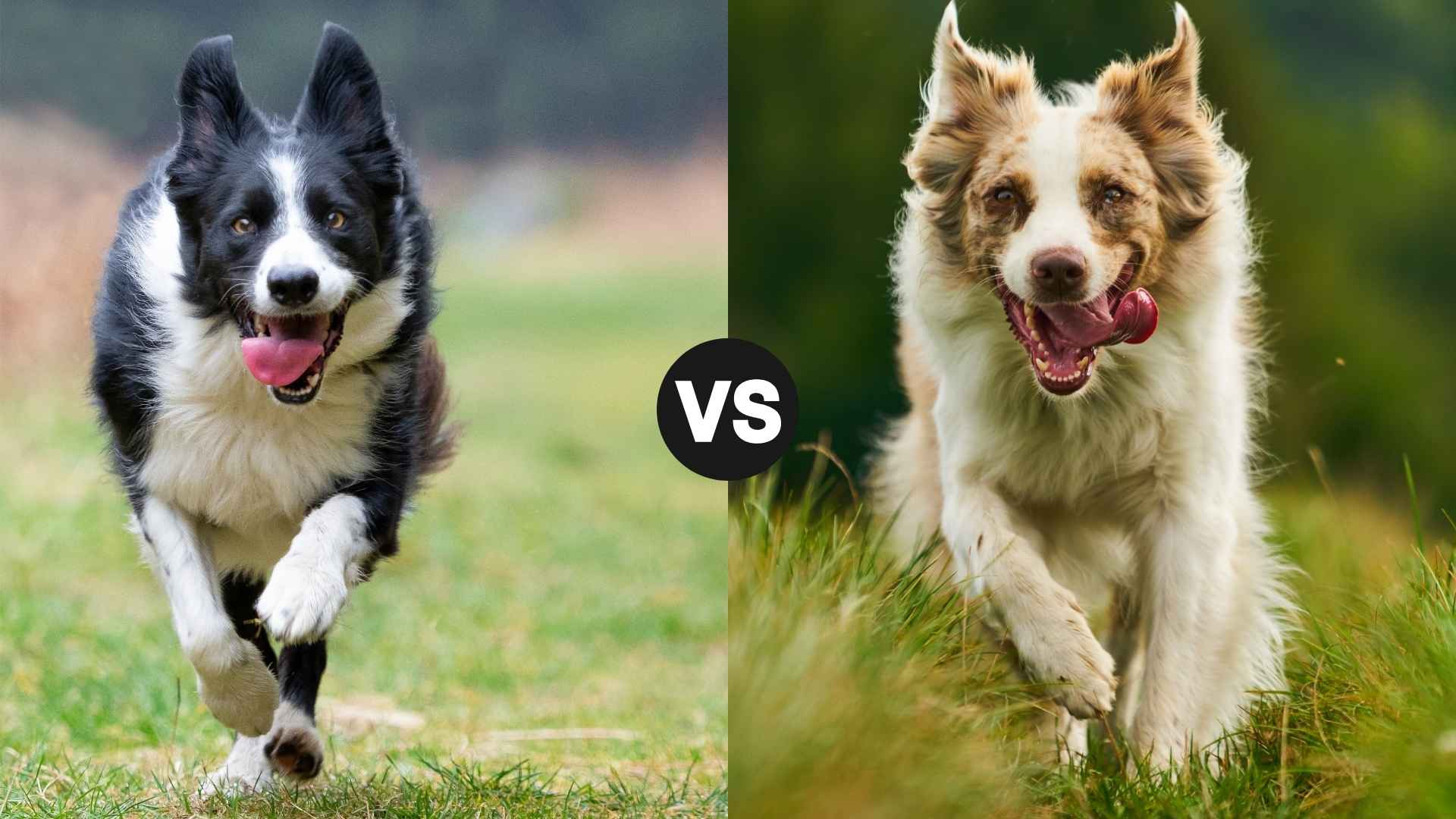There’s a lot to admire about these two herding powerhouses—the Border Collie and the Australian Shepherd. Brimming with intelligence, charm, and unshakable energy, both breeds are beloved for their work ethic and eagerness to please.
In fact, dog trainer Brian Kilcommons of Great Pets Resort compares living with them to sharing space with a Mensa student. These are not just smart dogs—they’re dogs that might end up training you if you’re not prepared!
If you’re an active dog lover looking for a devoted, energetic, and highly trainable companion, you might find yourself torn between these two brainy tail-waggers. Each breed brings its own mix of loyalty, enthusiasm, and athleticism to the table.
So, how do you choose between them? In this blog, we’ll break down the similarities and differences between the Border Collie and Australian Shepherd to help you find your perfect match.
Border Collie vs. Australian Shepherd
Both the Australian Shepherd and Border Collie were bred with a purpose—herding livestock with precision, intelligence, and tireless energy. The Border Collie hails from the border regions of England, Scotland, and Wales, where it earned its reputation managing sheep in rugged terrains with stealth, speed, and uncanny instinct.
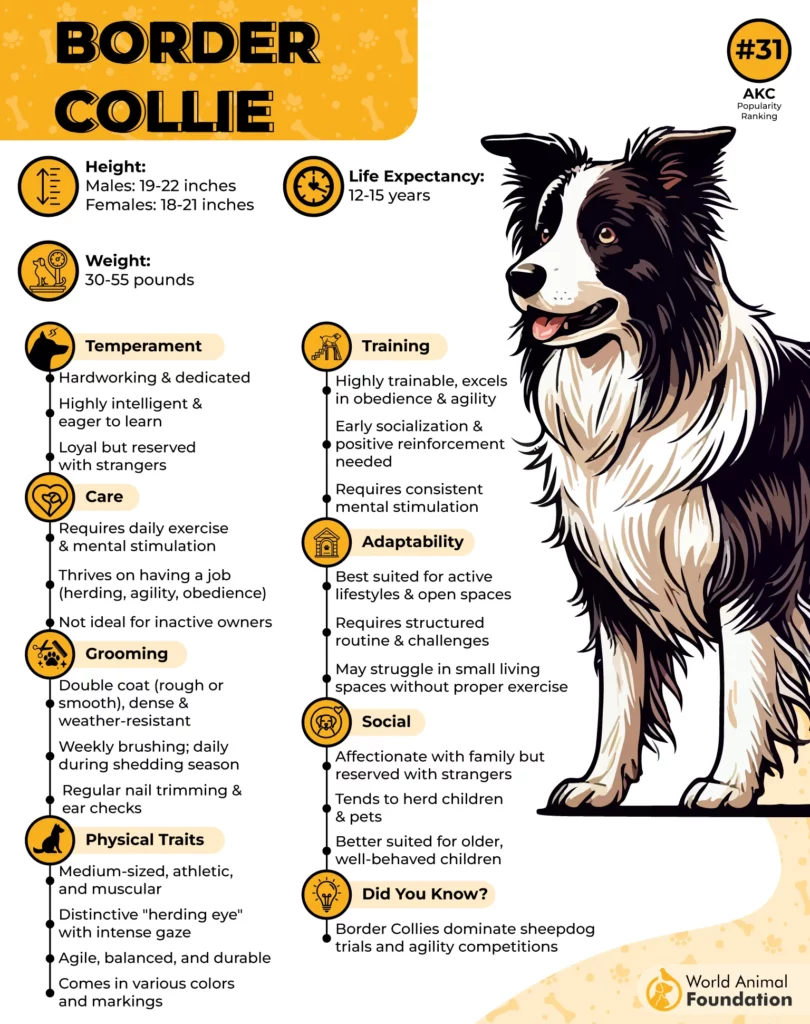
Today, this working dog breed continues to thrive in its traditional role on farms while also excelling in agility, dog sports, obedience, and scent detection work. Border Collies are lean, fast, and built for sudden, sharp movement—traits that highlight their high drive and need for daily mental and physical challenges.
The Australian Shepherd, despite its name, developed its identity in the United States, influenced by herding breeds brought over from Europe via Australia. Known for their muscular build and eagerness to please, Aussies are agile, smart, and intensely loyal.
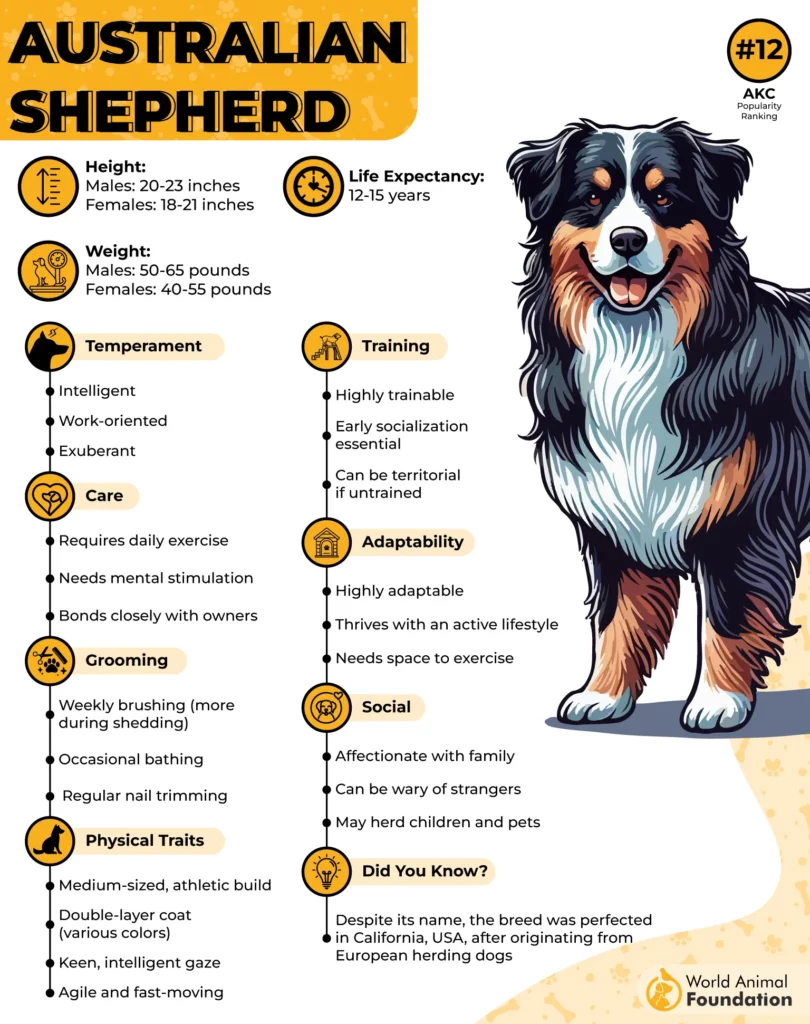
Their versatility shines in various roles—from farm dog to therapy companion to star of agility trials. While both breeds demand active, engaged homes, the Aussie may offer a slightly more relaxed temperament, making it a better fit for families seeking a highly trainable yet affectionate companion with strong working roots.
Origins and Background
The Border Collie has ancient roots dating back to the Roman Empire, where Roman herding dogs were brought to Britain and eventually interbred with Viking spitz-type dogs. This crossbreeding produced a smaller, agile, and sharp-witted dog, perfectly suited for the rocky highlands of Scotland and Wales.

For centuries, Border Collies thrived as expert sheepdogs along the English-Scottish border, earning their reputation as the world’s greatest herders. Known for their stealth, explosive energy, and intense focus, Border Collies remain unmatched in agility and obedience tasks. Despite being used for over 300 years, the breed only gained official recognition from the American Kennel Club in 1995.
The Australian Shepherd, on the other hand, has a more modern and somewhat misleading name. Although it suggests Australian origins, the breed was actually developed in the western United States during the late 1800s. Its lineage includes British herding dogs that traveled through Australia and possibly the smooth-faced Pyrenean Shepherd from the Basque region of Europe.
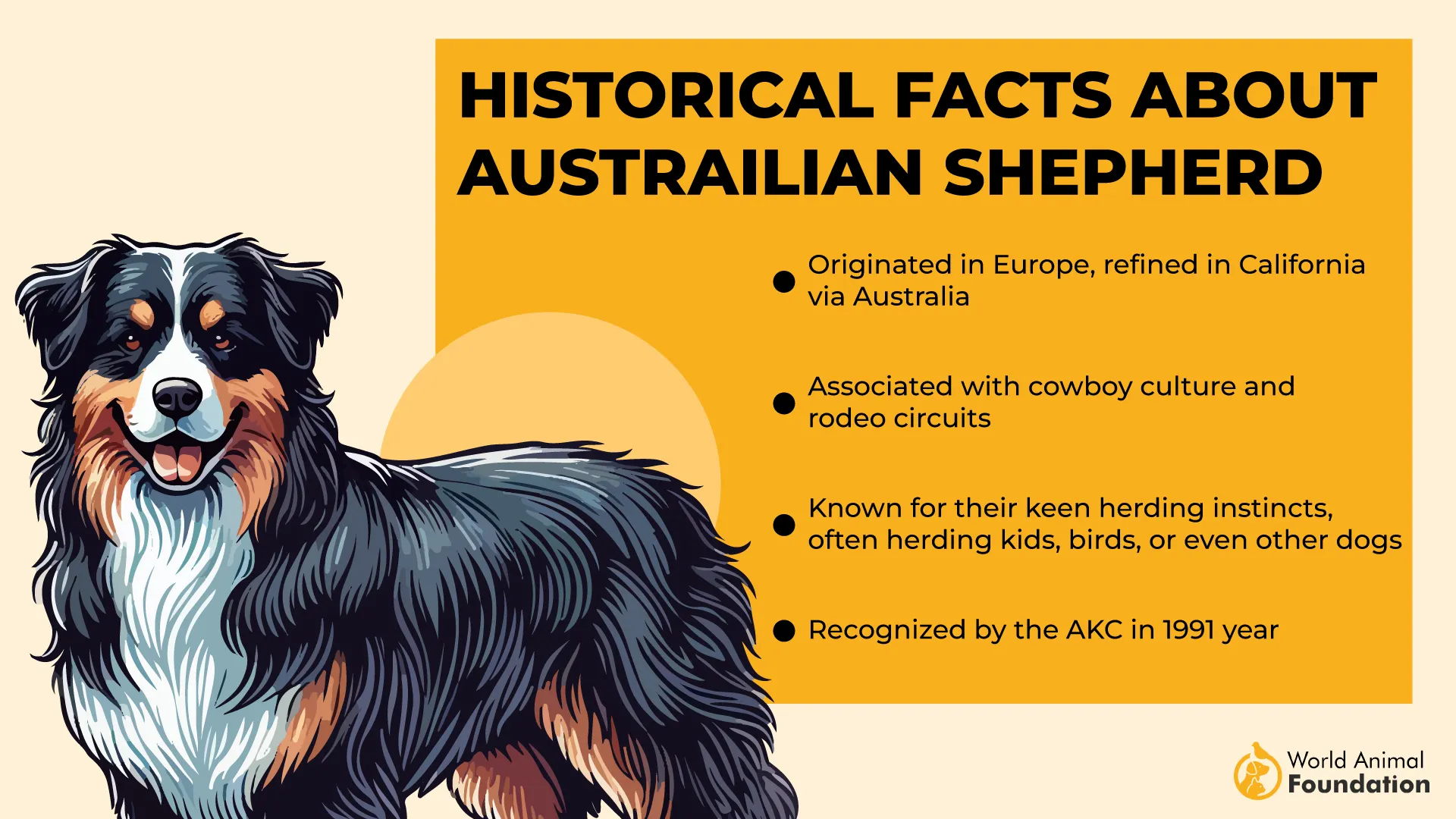
Basque immigrants brought their herding dogs to Australia and then to California, where American ranchers mistakenly assumed the dogs were Australian. Thus, the breed became known as the Australian Shepherd. Highly valued for their versatility and work ethic, Aussies became iconic in the Western ranch and rodeo scene and were formally recognized by the AKC in 1991.
Size and Physical Appearance
The Border Collie typically weighs between 30 and 55 pounds and stands around 18 to 22 inches tall at the shoulder. They are lean, athletic, and built for speed and endurance.
In contrast, the Australian Shepherd is generally a bit more robust, weighing 40 to 65 pounds and standing 18 to 24 inches tall, with males being noticeably larger than females.
While both breeds are agile and energetic, Aussies tend to have a slightly stockier frame, giving them a stronger, more muscular appearance compared to the Border Collie’s sleek silhouette.
Coat and Appearance
Border Collies come in two main coat types: rough (medium-length and wavy) and smooth (shorter and sleek). Their coats can be found in a variety of colors, including classic black and white, all-black, red, lilac, blue, and even merle patterns. Their expressive, almond-shaped eyes and signature “herding eye” give them an intense, intelligent look, states WebMD.
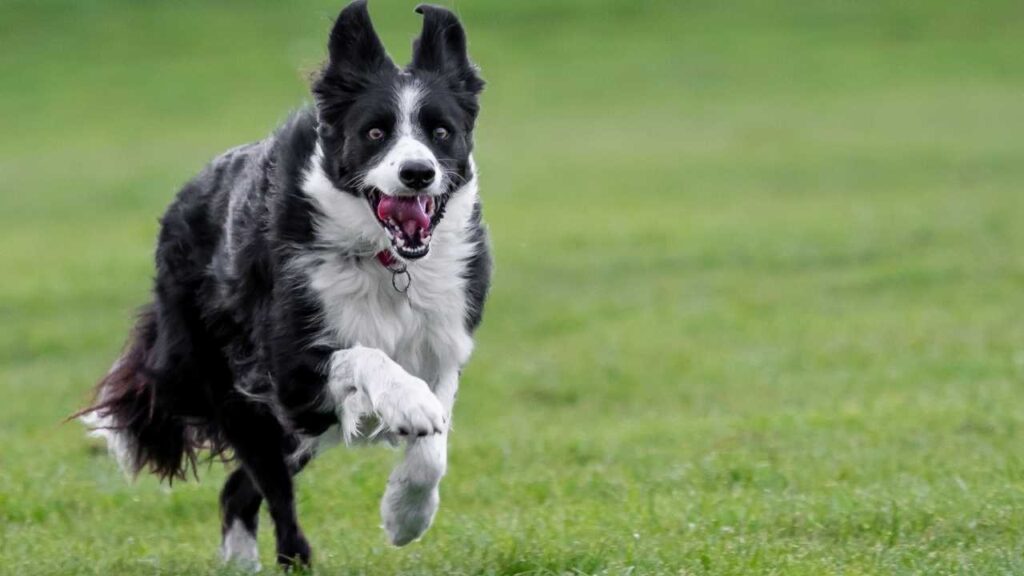
On the other hand, the Australian Shepherd is known for its highly variable, medium-length coat that may be slightly wavy with moderate feathering. Standard colors include black, red, blue merle, and red merle, often accompanied by white markings or tan (copper) points. Aussies often have striking eyes in dark brown, blue, or amber—sometimes even two different colors—and many have a naturally bobbed tail, adding to their distinct look.
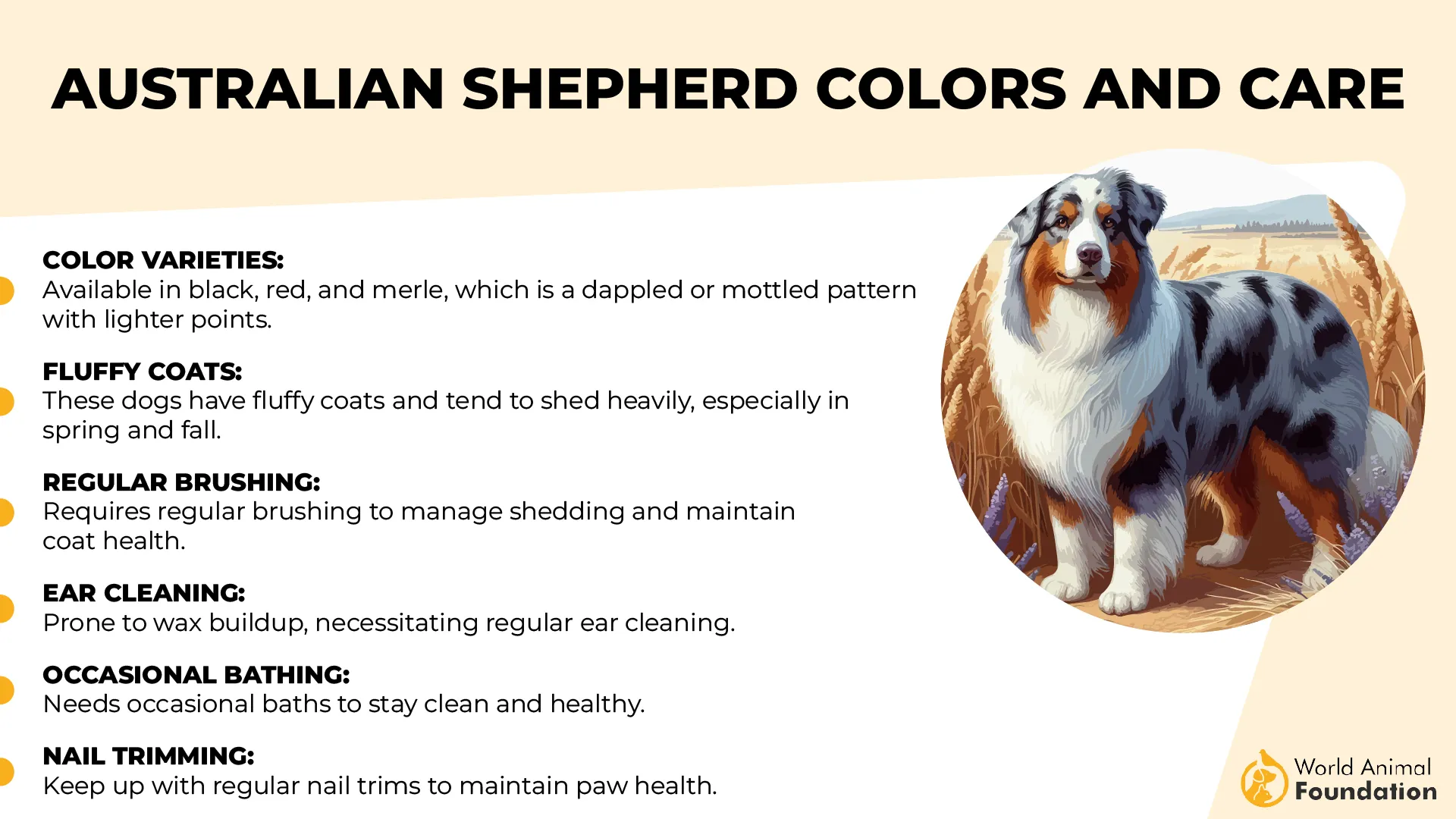
Health and Lifespan
Border Collie Lifespan: 12–15 years. While generally a healthy breed, they are genetically prone to some common health issues, including:
Hip dysplasia causes joint pain and arthritis.
Epilepsy, with seizures often starting between 2–5 years of age.
Collie Eye Anomaly (CEA), a congenital eye problem that may cause vision loss or blindness.

Multidrug Resistance Mutation (MDR1), making them sensitive to certain medications.
Trapped Neutrophil Syndrome (TNS) and Neuronal Ceroid Lipofuscinosis (CL), rare but fatal genetic conditions affecting immunity and brain function.
Early genetic testing and responsible breeding are essential for prevention and long-term health, states PetMD.
Australian Shepherd Life expectancy: Also 12–15 years, though they may face a different range of breed-specific common health concerns:
Hip and elbow dysplasia, leading to mobility issues and joint degeneration.
Progressive Retinal Atrophy (PRA) and hereditary cataracts both cause vision loss.
Iris coloboma, which may result in light sensitivity.
Primary epilepsy, often managed with lifelong medication.
MDR1 mutation, similar to Border Collies, affects drug sensitivity.
Deafness (especially in double-merle Aussies), lymphosarcoma, and hemangiosarcoma are also concerns.
Proactive health screening, especially genetic and eye testing, helps ensure a longer, healthier life, states PetMD.
Intelligence and Temperament
Border Collies are widely regarded as the most intelligent dog breed, famously capable of understanding over 1,000 words—as demonstrated by Chaser, the world’s smartest dog. Their sharp minds demand constant stimulation and structured tasks to stay content.
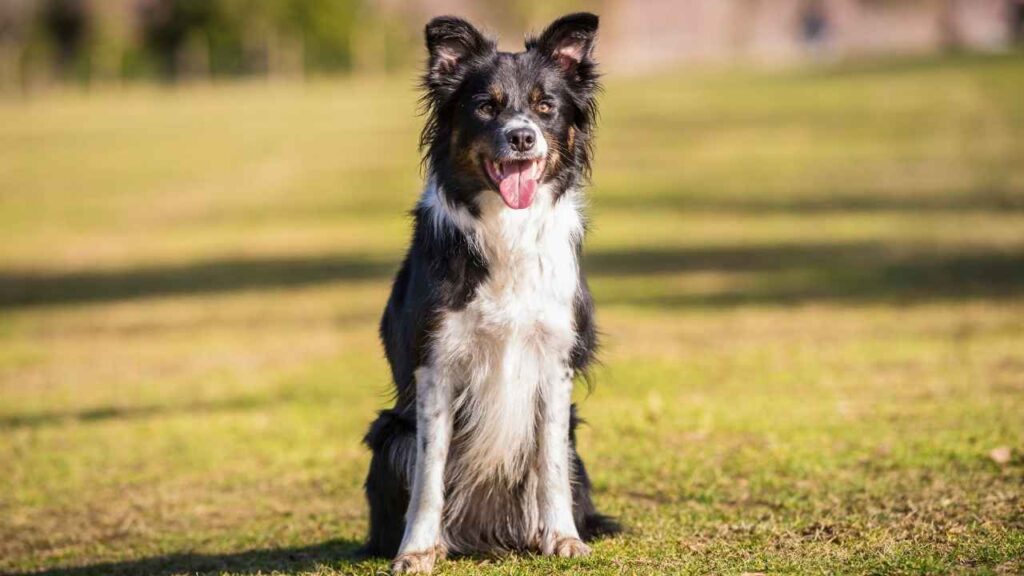
Without daily mental and physical challenges, Border Collies can become anxious, destructive, or attempt to herd pets and children. Their intense focus, independence, and drive to work make them best suited for experienced owners who can keep them consistently engaged with activities like agility, flyball, or herding trials.
Australian Shepherds are also brilliant, loyal, and agile dogs with strong herding instincts. While typically friendly, they may be cautious with strangers until properly introduced. Aussies form deep bonds with their families, sometimes leading to clinginess or separation anxiety.

They thrive with early socialization, obedience training, and a job to do. Like Border Collies, Aussies are high-energy breeds and benefit from rigorous exercise and mental enrichment. Without these outlets, they may develop destructive behaviors or attempt daring escapes, making secure containment and regular training sessions essential, states Britannica.
Herding Style and Work Ethic
Border Collies were originally bred to herd sheep across the rugged landscapes of the British Isles. They are known for their intense work ethic, unmatched intelligence, and precise herding style. Their hallmark trait, known as “the eye,” involves using a fixed, intimidating stare to control the movement of livestock, often likened to their wolf ancestry.
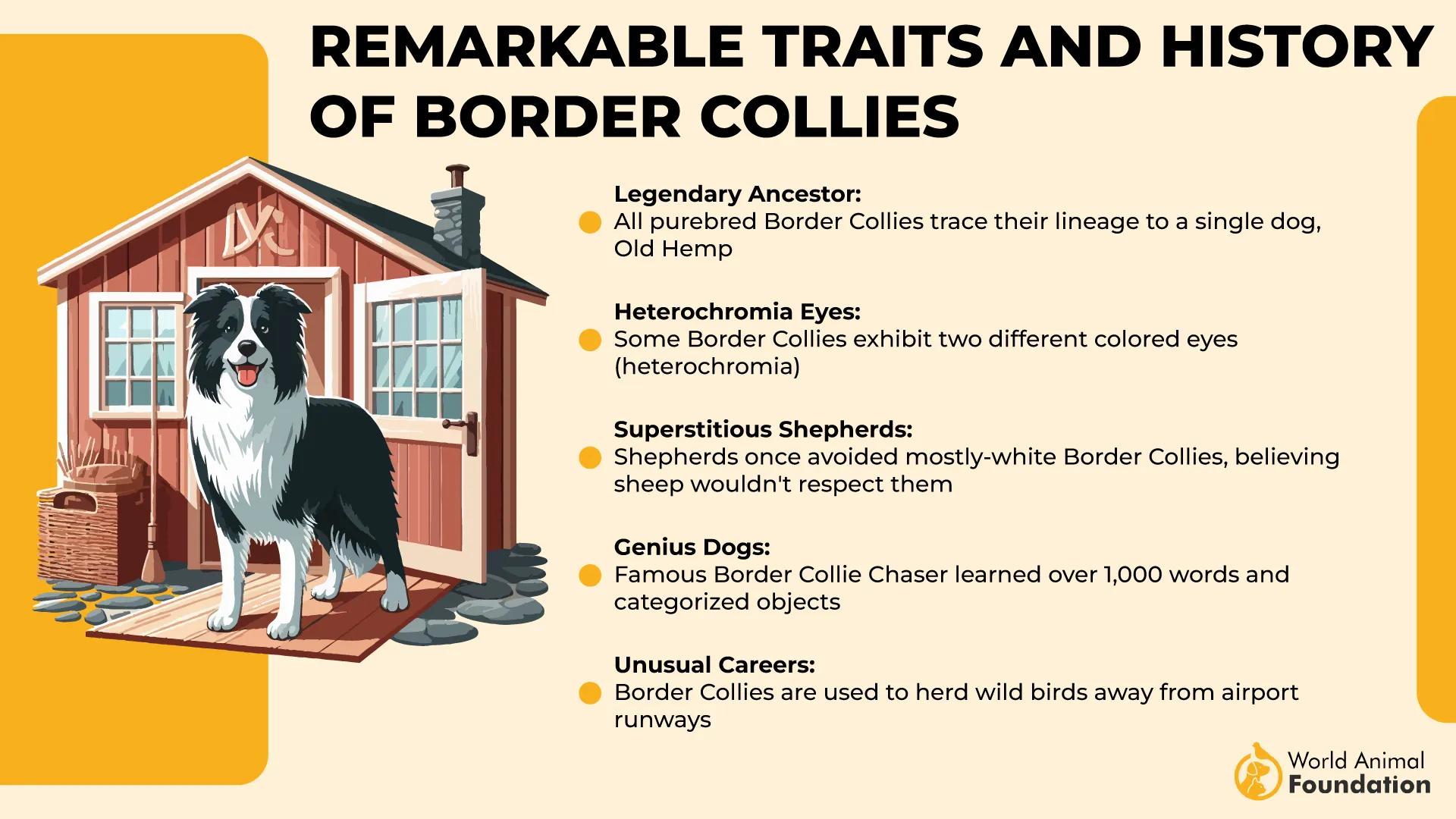
Border Collies rely on silence, stalking, and subtle body language, responding to hand signals and whistles with remarkable precision. Their strong-eyed technique makes them exceptional at guiding even scattered flocks into tight spaces with minimal direction.
Australian Shepherds, in contrast, use a more physical and vocal approach, relying on barking, body positioning, and confident movements. Categorized as loose-eyed herders, Aussies tend to work in a more upright, close-in manner, driving livestock rather than silently stalking them, according to the Australian Shepherd Club of America.

They excel in handling larger or slow-moving groups, such as cattle, and are especially effective in confined areas. Known for their versatility and strong instincts, Aussies use a blend of bark, wear, and occasional grip to manage their stock, adapting their style to the needs of the herd with a determined and assertive attitude.
Which Breed Is Right for You?
Choosing between a Border Collie and an Australian Shepherd comes down to your lifestyle, experience, and what you want in a canine companion. Both breeds are highly intelligent, extremely energetic, and deeply loyal, but their needs and personalities differ in key ways.
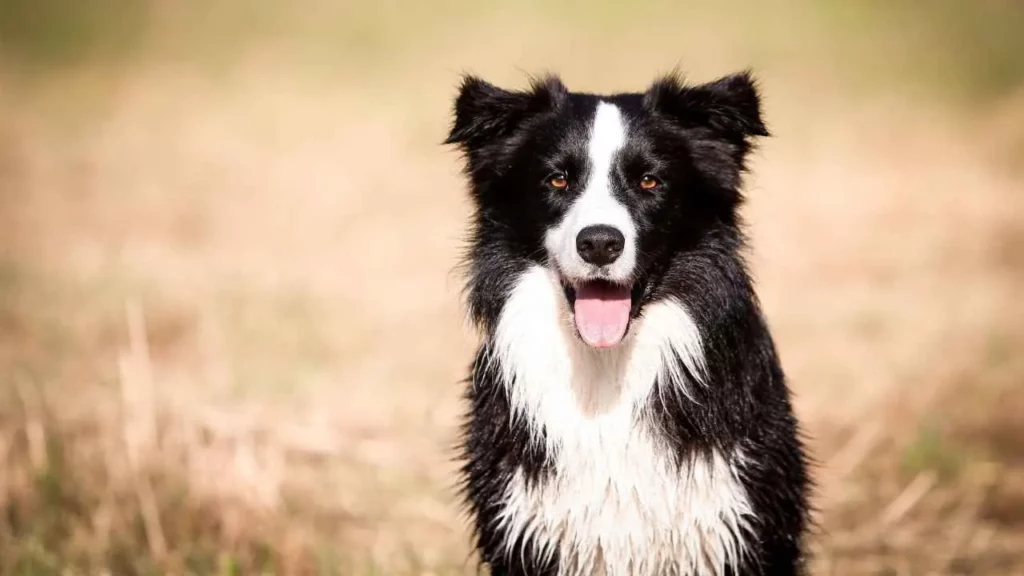
If you’re looking for the ultimate hard-working breed with razor-sharp intelligence, the Border Collie may be your perfect match. This breed thrives on mental stimulation, advanced training, and high-level tasks. Border Collies are best suited for experienced dog owners who can dedicate time for daily exercise, training, and structured play. Without a job to do, they may develop anxiety or behavioral issues.
On the other hand, the Australian Shepherd offers a balanced mix of smarts, energy, and family loyalty. Aussies are a bit more adaptable to home life, though they still need plenty of physical activity and mental challenges.

They may be better suited to active families who want a companion for hiking, running, or agility work. Their affectionate nature and strong attachment to their humans also make them wonderful, loyal pets—though they can develop separation anxiety if left alone too often.
In short:
Choose a Border Collie if you want a task-driven, quick-learning partner and have time for daily mental and physical challenges.
Choose an Australian Shepherd if you want an intelligent, energetic, and family-friendly dog with a slightly more adaptable temperament.
Conclusion
In conclusion, both the Border Collie and Australian Shepherd are hardworking, intelligent pups that make excellent companions for the right families.
These two breeds share traits like strong problem-solving skills, a love for moving objects, and double coats—whether rough coats or smooth coats—that need to be brushed regularly. At the same time, neither is ideal for apartment living; both thrive with a yard, plenty of free time from their owners, and mental challenges like puzzle toys.
Whether you choose a white-red Aussie or a classic black-and-white Border Collie, proper care and a high-quality diet are essential.
With the right training, a secure fence, and time spent with kids and other dogs, either breed can be a good dog. Just be sure to work with responsible breeders and prepare for an active lifestyle, because these pups aren’t just pets; they’re partners.


